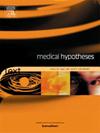Nasal carbon dioxide monitoring as the optimal indicator for assessing pediatric recovery in the post-anesthesia care unit
IF 2.1
4区 医学
Q3 MEDICINE, RESEARCH & EXPERIMENTAL
引用次数: 0
Abstract
Current methods for assessing pediatric recovery in the post-anesthesia care unit (PACU) rely heavily on subjective clinical scales, intermittent vital sign measurements, and behavioral observations. These approaches often lack sensitivity to early signs of respiratory compromise or delayed neurological recovery, particularly in young children who may struggle to communicate discomfort. This hypothesis proposes that continuous nasal carbon dioxide (CO2) monitoring offers a superior, objective, and non-invasive indicator for evaluating recovery in pediatric patients following anesthesia. By correlating end-tidal CO2 (EtCO2) trends with respiratory efficiency, sedation depth, and hemodynamic stability, this method may enable earlier detection of postoperative complications (e.g., hypoventilation, airway obstruction) and more precise discharge readiness assessment. Physiological and technical rationale, along with potential clinical validation pathways, are discussed.
鼻二氧化碳监测作为评估麻醉后护理单位儿童康复的最佳指标
目前评估麻醉后护理病房(PACU)儿童康复的方法严重依赖于主观临床量表、间歇性生命体征测量和行为观察。这些方法往往缺乏对呼吸损害或延迟神经恢复的早期迹象的敏感性,特别是在可能难以沟通不适的幼儿中。这一假设表明,持续的鼻腔二氧化碳(CO2)监测为评估麻醉后儿科患者的恢复提供了一种优越、客观、无创的指标。通过将末潮CO2 (EtCO2)趋势与呼吸效率、镇静深度和血流动力学稳定性相关联,该方法可以更早地发现术后并发症(如通气不足、气道阻塞),并更精确地评估出院准备情况。生理和技术原理,以及潜在的临床验证途径,进行了讨论。
本文章由计算机程序翻译,如有差异,请以英文原文为准。
求助全文
约1分钟内获得全文
求助全文
来源期刊

Medical hypotheses
医学-医学:研究与实验
CiteScore
10.60
自引率
2.10%
发文量
167
审稿时长
60 days
期刊介绍:
Medical Hypotheses is a forum for ideas in medicine and related biomedical sciences. It will publish interesting and important theoretical papers that foster the diversity and debate upon which the scientific process thrives. The Aims and Scope of Medical Hypotheses are no different now from what was proposed by the founder of the journal, the late Dr David Horrobin. In his introduction to the first issue of the Journal, he asks ''what sorts of papers will be published in Medical Hypotheses? and goes on to answer ''Medical Hypotheses will publish papers which describe theories, ideas which have a great deal of observational support and some hypotheses where experimental support is yet fragmentary''. (Horrobin DF, 1975 Ideas in Biomedical Science: Reasons for the foundation of Medical Hypotheses. Medical Hypotheses Volume 1, Issue 1, January-February 1975, Pages 1-2.). Medical Hypotheses was therefore launched, and still exists today, to give novel, radical new ideas and speculations in medicine open-minded consideration, opening the field to radical hypotheses which would be rejected by most conventional journals. Papers in Medical Hypotheses take a standard scientific form in terms of style, structure and referencing. The journal therefore constitutes a bridge between cutting-edge theory and the mainstream of medical and scientific communication, which ideas must eventually enter if they are to be critiqued and tested against observations.
 求助内容:
求助内容: 应助结果提醒方式:
应助结果提醒方式:


